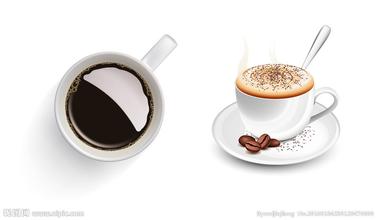What are the medium-to-dark roasts-medium roast and dark roast
What are the moderate and deep roasted coffee? medium roasting and deep roasting
For example, coffee beans from highlands such as Kenya and Colombia are classified as type D because of their thick meat, large grains and high water content. Type D coffee beans have poor heat permeability and strong sour taste, so it is not suitable to adopt the baking degree of "light baking to moderate roasting" like type A. It is more suitable for "medium-deep baking to deep baking" which will produce a strong bitter taste.
What would happen if type D coffee beans from Kenya or Colombia were roasted with shallow roasting similar to type A? I'm afraid the heat can't penetrate the bean core, producing a "sour taste" mixed with bitterness and acid. Nor can it lead to its inherent bitterness and mellowness. In this way, the rare Kenyan or Colombian coffee beans will be wasted and end up in vain.
Next, the temperature rises from 205 °to about 220 °, the color of the coffee changes from light brown to medium brown, and there is about 15% weightlessness. This chemical process is called high-temperature decomposition, in which the chemical composition of coffee beans changes and releases carbon dioxide. After the first burst, there is a pause, followed by a brief endothermic process, followed by a chemical reaction, followed by an exothermic process known as the second burst. The second high temperature decomposition occurs at 225 °and the color changes to a moderate black-brown color.
The second burst is faster, and the coffee beans show an oily luster and become fragile, and at this stage, its ingredients begin to carbonize, resulting in charred properties. The smell of coffee can be smelled before the first burst. The first burst reflects the physical stretch of coffee and the chemical reactions of the compounds associated with it, such as the formation of water and the release of carbon dioxide. When the temperature reaches its peak, a second burst occurs, when the cellulose, matrix and coffee beans all begin to break.
The darker the robusta beans are baked, the more delicious they are; the darker the Arabica beans are baked, the more delicious and special they lose. On the other hand, medium baking can make their delicacies well displayed.
The automatic sorting machine separates high-quality coffee beans from many coffee beans, removes beans that are too light or too black, and applies very sophisticated production control techniques to reduce the percentage of unqualified coffee beans, including: ultraviolet fluorescence analyzer to identify moldy beans; trichromatic light drawing technology to produce color fingerprints (yellow-green, red and infrared) for each coffee bean

Important Notice :
前街咖啡 FrontStreet Coffee has moved to new addredd:
FrontStreet Coffee Address: 315,Donghua East Road,GuangZhou
Tel:020 38364473
- Prev

Calculation of the proportion of hand-brewed coffee-the proportion of coffee to coffee partners
Calculation of the proportion of hand-brewed coffee-the ratio of coffee to coffee partners SCAA coffee brewing rate chart. If you have the TDS gadget and find that the value of coffee is within the yellow box in the middle of the table below, the coffee wine is relatively balanced and delicious. In this table, the Abscissa is the coffee extraction rate, that is, the ratio of the coffee ingredients extracted from the coffee bean (powder) to the coffee bean (portion), expressed by the ordinate.
- Next

The practice of cappuccino Coffee Video tutorial the difference between drinking method and latte
The difference between a cappuccino coffee and a latte 1. First, pour the milk into the kettle, about half of it, then close the lid, hold the kettle with one hand, and pump the piston of the kettle up and down with the other hand. The faster the speed is, the finer the foam is, until the milk in the kettle is changed from half to a pot of ok, and then the milk and the
Related
- Beginners will see the "Coffee pull flower" guide!
- What is the difference between ice blog purified milk and ordinary milk coffee?
- Why is the Philippines the largest producer of crops in Liberia?
- For coffee extraction, should the fine powder be retained?
- How does extracted espresso fill pressed powder? How much strength does it take to press the powder?
- How to make jasmine cold extract coffee? Is the jasmine + latte good?
- Will this little toy really make the coffee taste better? How does Lily Drip affect coffee extraction?
- Will the action of slapping the filter cup also affect coffee extraction?
- What's the difference between powder-to-water ratio and powder-to-liquid ratio?
- What is the Ethiopian local species? What does it have to do with Heirloom native species?

